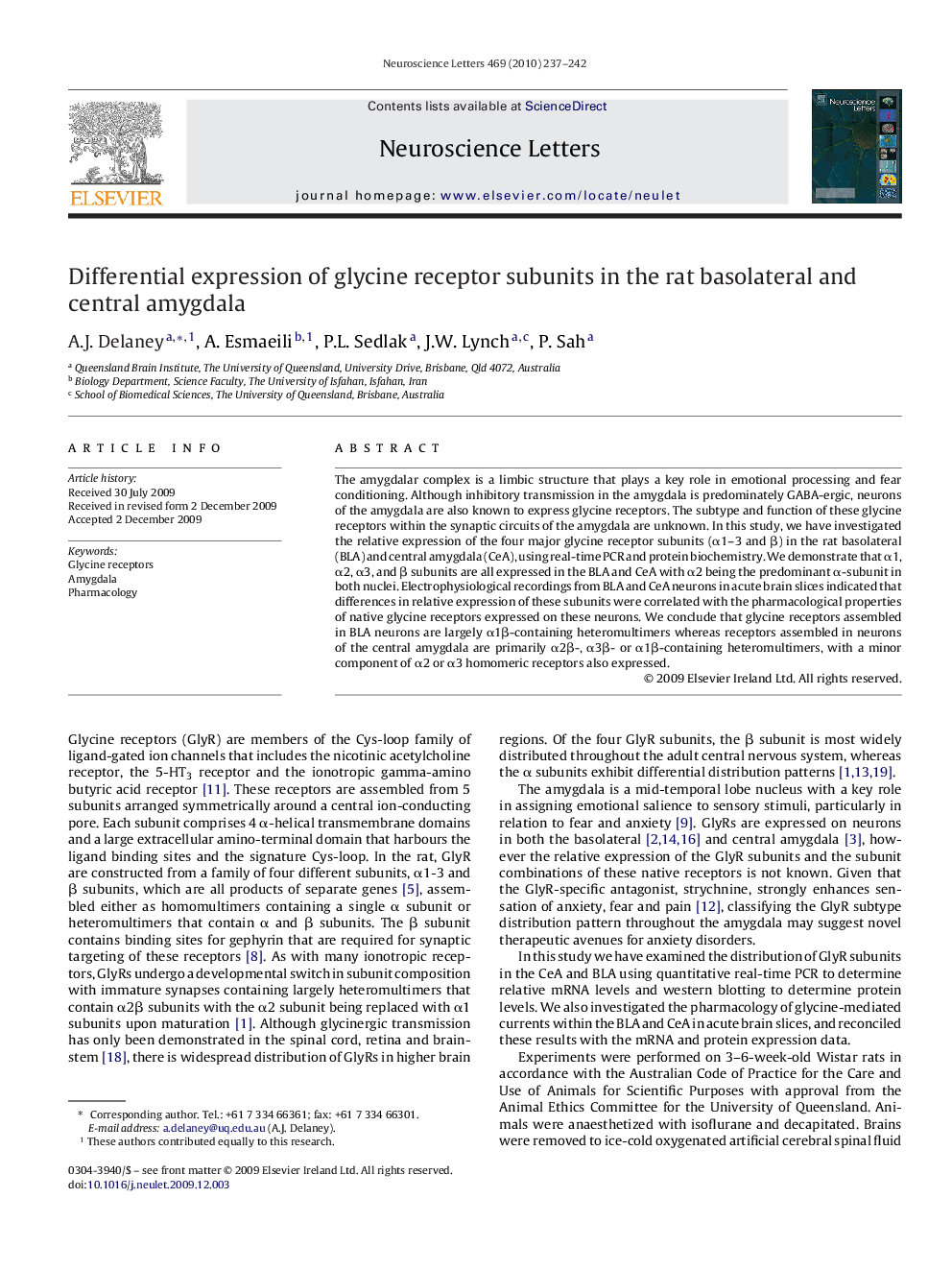| Article ID | Journal | Published Year | Pages | File Type |
|---|---|---|---|---|
| 4346651 | Neuroscience Letters | 2010 | 6 Pages |
The amygdalar complex is a limbic structure that plays a key role in emotional processing and fear conditioning. Although inhibitory transmission in the amygdala is predominately GABA-ergic, neurons of the amygdala are also known to express glycine receptors. The subtype and function of these glycine receptors within the synaptic circuits of the amygdala are unknown. In this study, we have investigated the relative expression of the four major glycine receptor subunits (α1–3 and β) in the rat basolateral (BLA) and central amygdala (CeA), using real-time PCR and protein biochemistry. We demonstrate that α1, α2, α3, and β subunits are all expressed in the BLA and CeA with α2 being the predominant α-subunit in both nuclei. Electrophysiological recordings from BLA and CeA neurons in acute brain slices indicated that differences in relative expression of these subunits were correlated with the pharmacological properties of native glycine receptors expressed on these neurons. We conclude that glycine receptors assembled in BLA neurons are largely α1β-containing heteromultimers whereas receptors assembled in neurons of the central amygdala are primarily α2β-, α3β- or α1β-containing heteromultimers, with a minor component of α2 or α3 homomeric receptors also expressed.
